6 Natural Black Spot Remedies For Roses
Nothing strikes fear in the heart of rose growers like the appearance of black spot. Prevention is better than cure, so employ these simple treatments to minimize infection.
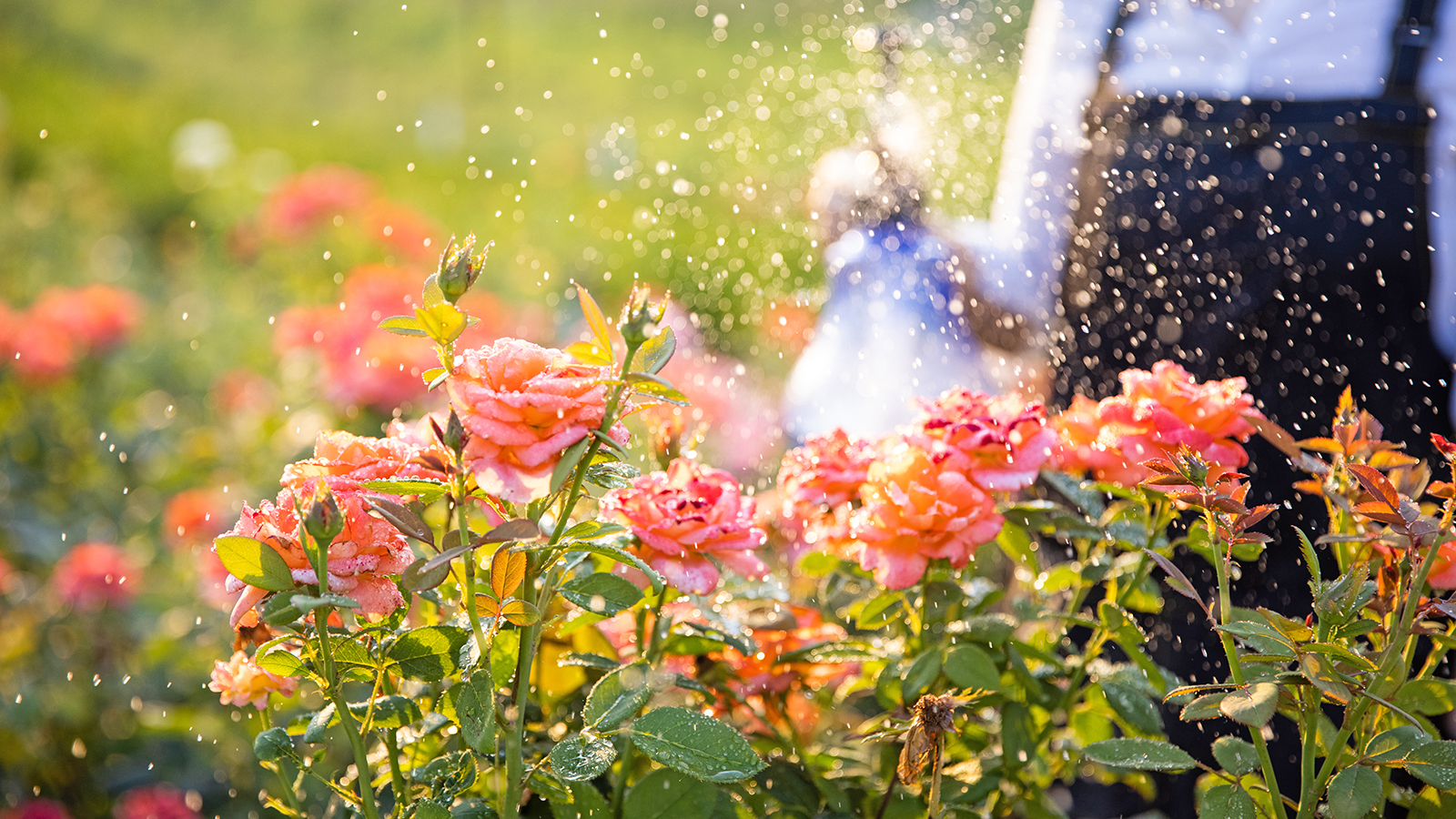

Melanie Griffiths
Rose aficionados love and care for their plants like the most nurturing of parents. So when a disease like black spot strikes, it's a worrisome moment that can threaten plans to start a rose garden.
Black spot on roses is a fungal disease caused by Diplocarpon rosae. The disease won’t kill the plant but it will mar the pretty leaves and, over time, cause a decline in the plant's health. This is because the leaves begin to die and drop, slowing the production of plant sugars.
The disease presents as dark, irregularly round spots with yellow halos. It is most prevalent when the leaves remain wet too long and where old plant material is still on the site.
Many gardeners use chemical fungicides to combat the disease, but there is the potential for toxic build-up and such formulas can pose a hazard to aquatic species. These products also reduce biodiversity and may adversely affect soil health by destroying beneficial fungi.
Using a homemade, non-toxic creation is better for the environment and is usually a more cost-effective solution.
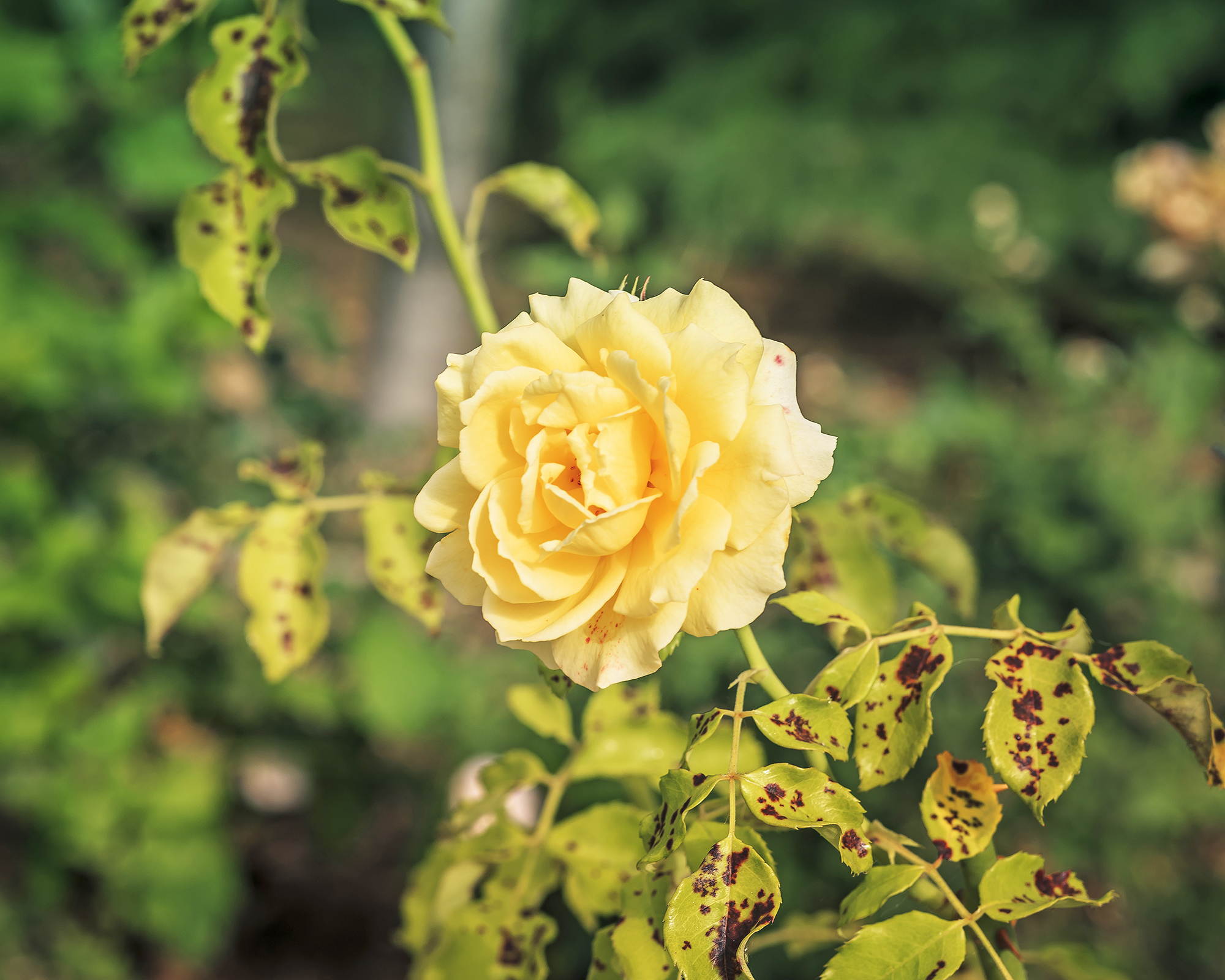
Symptoms Of Black Spot In Roses
Black spot disease usually starts on the plant's lower leaves as fungal spores are splashed up during rain or irrigation. The spots appear three days after infection with new spores forming within 10 days.
The spores grow into roundish lesions with feathered edges, measuring up to ½ inch (1.3cm) wide. Spots range from black to dark purple, with a lighter center, and may have a yellow border. In addition to the leaves, immature stems can get black lesions.
Gardening tips, videos, info and more delivered right to your inbox!
Sign up for the Gardening Know How newsletter today and receive a free copy of our e-book "How to Grow Delicious Tomatoes".
Over time, the leaves turn yellow and fall off the plant. Because the plant is defoliating, it lacks enough leaf area to photosynthesize, and a gradual decline in vigor is observed.
Natural Treatments
There are numerous organic and environmentally friendly products on the market, but our homes are filled with DIY solutions for plant management. Most of these are non-toxic and safe to use around children and pets and won’t harm the environment.
1. Good Hygiene
The most important thing you can do to manage black spot in roses is to practice good plant hygiene.
One of the biggest rose deadheading mistakes is not sterilizing pruners pruners when moving between plants. This can infect other shrubs.
Always clean up dead plant matter, including leaves, stems, and flower heads, from the ground, and dispose of it. If left around the plant, these will reinfect even a treated rose bush.
Never compost diseased material. Black spot can overwinter in the soil, so preventing it from spreading to other areas should be a top priority.
Prune away any canes that have signs of infection using a sterile, sharp tool. Also, thin out over-crowded shrubs, as air cannot circulate. For this reason, you should avoid planting roses too close together.
Do not overhead water, or in cases where the leaves get wet, only irrigate when they have plenty of time to dry off. The leaf surface must be continually wet for seven hours for the disease to bloom.
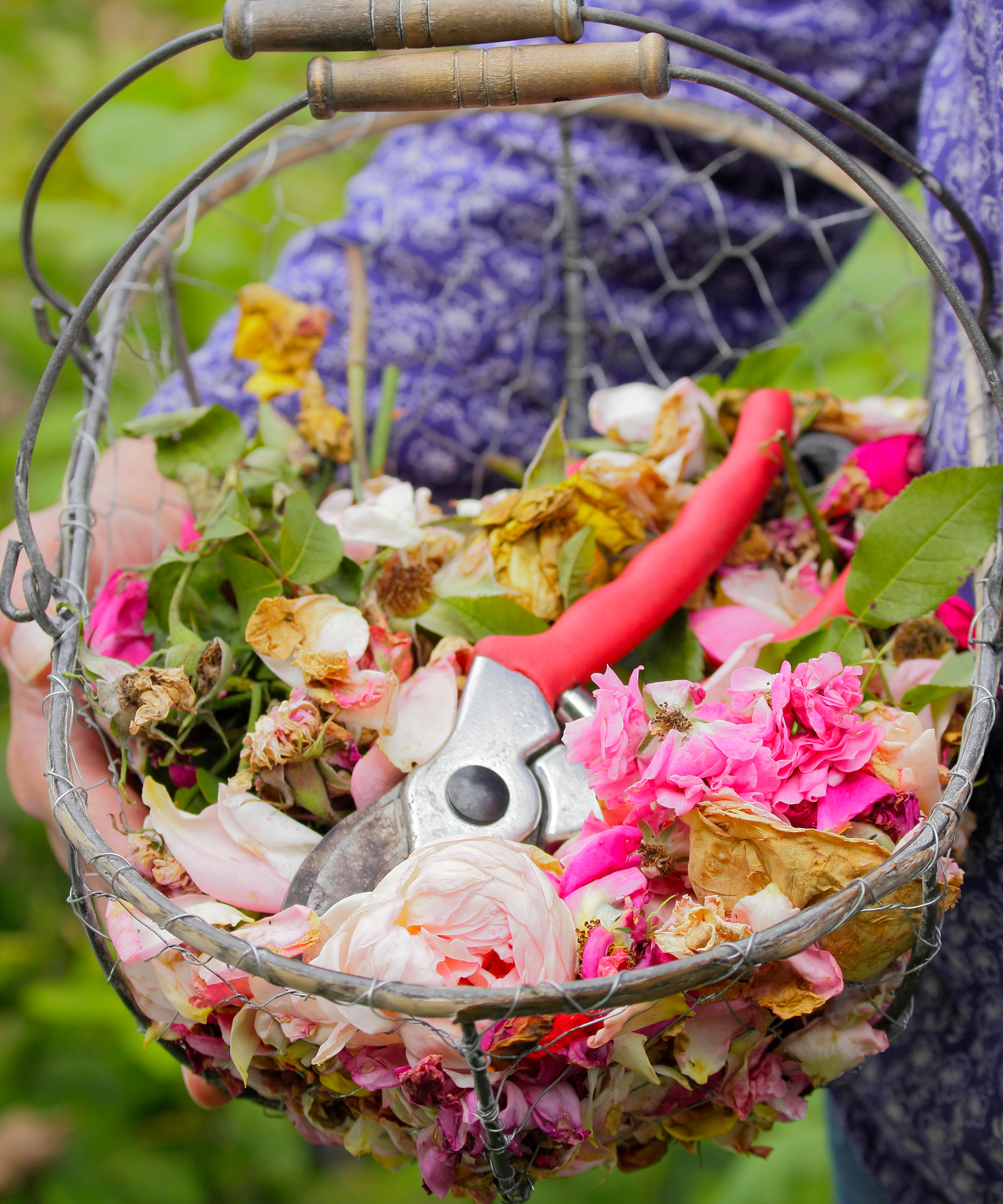
2. Neem Oil
Neem oil is a natural product that has fungicidal properties. It is not a cure for established black spot infections but is a practical and effective management strategy. When used regularly, it helps to prevent the germination of fungal spores. It is also effective at treating powdery mildew in roses.
In addition to its use as a fungicide, neem oil is a highly effective pesticide that repels and kills many common insects, without producing a toxic buildup in the environment.
Where roses are infested with pests such as aphids, thrips, and spider mites, neem oil will work double duty in tackling multiple issues.
To manage black spot and other issues, apply neem oil to roses every seven days as a foliar spray. Dilute 1-2 tablespoons of neem oil in 1 gallon (3.5L) of water, and add 1-2 teaspoons of liquid dish soap.
Avoid spraying neem oil solutions where beneficial insects, such as bees and ladybugs, are actively visiting the plant. Ideally, apply early in the morning or late at night.
3. Sulphur
Sulfur is an old-timer's solution to a host of garden problems. It works as a fungicide by creating an agent that destroys fungal spores. It's also a non-toxic pesticide and can be used to reduce soil pH if necessary.
Sulfur is most commonly sold as a powder or dust for fungicide purposes. For maximum efficacy, the product must come into contact with all parts displayed. It is an excellent preventative product with few side effects, although it should be used sparingly.
Formulas mixed with copper are sprayed onto the leaves but they wash off in rain or irrigation and must be reapplied frequently.
Copper sulfate can be made into an effective Bordeaux fungicide by mixing 1 gallon (3.5L) of water with 3 tablespoons (50ml) of copper sulfate and 10 tablespoons (148ml) of hydrated lime. However, the mixture can impart a blue-green stain on plants, so avoid spraying close to surfaces such as wooden fencing.
Avoid skin contact with sulfur and copper sulfate, as the substances are toxic to humans – but safe for beneficial insects.
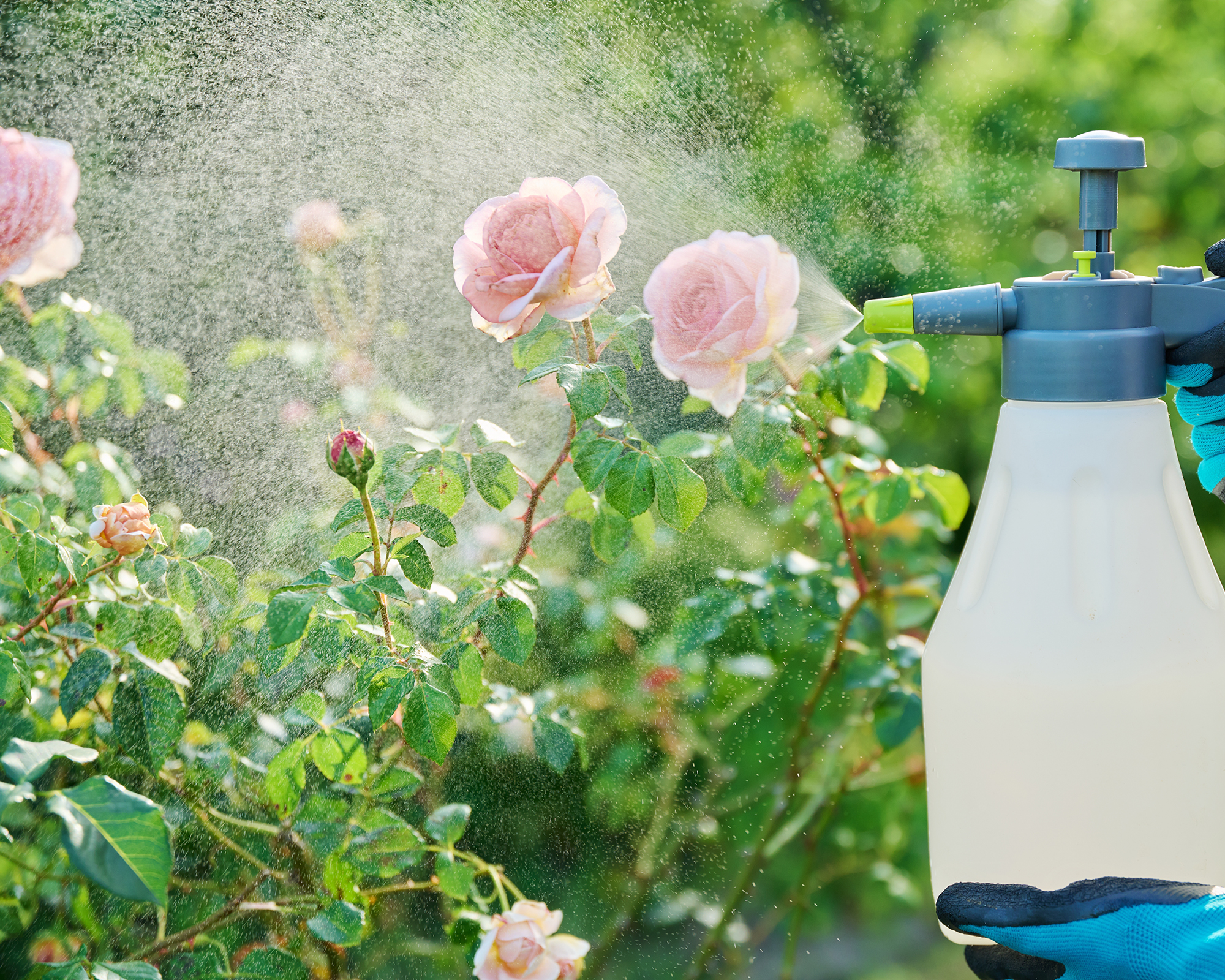
4. Baking Soda
Sodium bicarbonate, or baking soda, is a very cheap, widely available treatment that most of us have in our homes.
Homemade Black Spot Spray Recipe
This spray is quick and easy to make using household items. Many organic gardeners find it effective against fungal diseases.
- 1 gallon of water
- 1 tablespoon of baking soda
- 1 tablespoon of white vinegar
- 1 tablespoon of vegetable oil
- 1 teaspoon of dish soap
Mix and decant to a spray container. Treat roses weekly.
It's effective as a fungicide because it alters the pH of the leaf surface, making it inhospitable to the fungal spores. However, too much baking soda on plants can lead to salt buildup, which is harmful to plants, so it should be used sparingly.
Therefore, it is best to use baking soda as a preventative measure, or when black spot is in the early stages.
It just takes a spoonful mixed with water to create an effective spray. It may also be mixed with horticultural oil, which will adhere to the leaves better than water.
5. Plant Garlic
Garlic is a natural fungicide and is disliked by many pests, so it makes an excellent companion plant for roses. Onions and chives have a similar effect.
While planting garlic nearby won't cure black spot, anecdotal evidence suggests it can reduce infection rates.
As garlic is not visually intrusive, and can be harvested and added to countless recipes, adding it to your rose garden is worth a try.
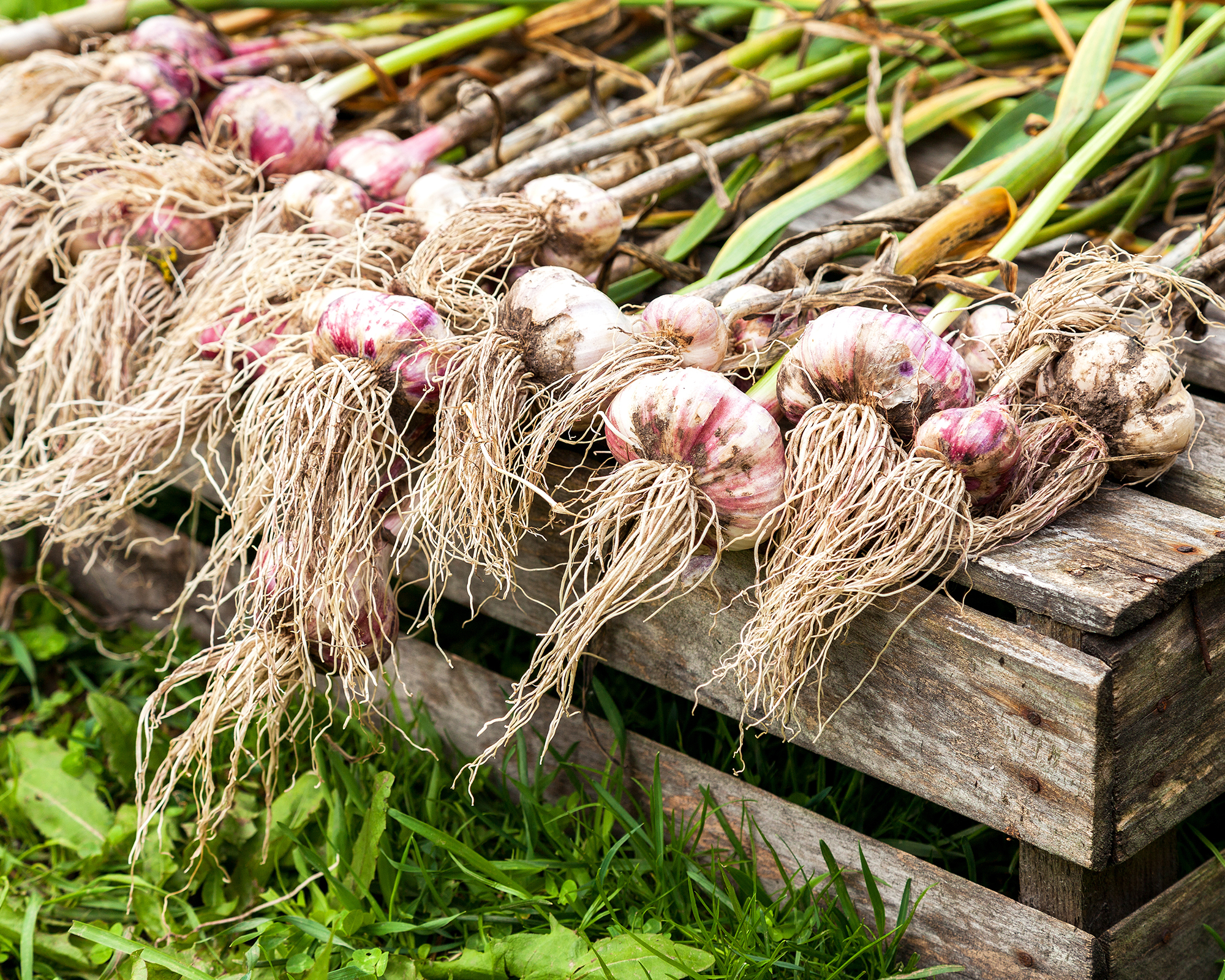
6. Apply Mulch
Coarse, organic mulch has been noted as minimizing the presence of black spot spores. The larger pieces keep the area dryer, reducing the presence of the fungus. For example, cedar mulch tends not to be displaced in the wind as much as other materials.
Mulching roses is best done in later winter or early spring when the plants are pruned. Apply a layer around 2-3 inches (5-8cm) thick.
Old-Fashioned Remedies
Old wives' tales pepper the gardening community. We are a superstitious lot who stand by our ancestors' garden solutions.
Banana peels dug in around a rose bush are said to help kill the fungal spores, but there is little evidence of this. However, the nutrients released as the skin rots will enhance the plant’s health.
Milk spray is another solution put forward in the gardening community. The theory is that a 1:1 mix of milk and water will create another fungus that fends off the black spot fungus.
Compost tea can also create a beneficial fungal covering on leaves while offering nutrients to the plants.
A healthy rose plant is less likely to succumb to the effects of black spot.

Bonnie Grant is a professional landscaper with a Certification in Urban Gardening. She has been gardening and writing for 15 years. A former professional chef, she has a passion for edible landscaping.
- Melanie GriffithsSenior Editor
-
 Looking For Plants To Give You The Soft And Fuzzies? Try These 5 Fuzzy Leaf Plant Options
Looking For Plants To Give You The Soft And Fuzzies? Try These 5 Fuzzy Leaf Plant OptionsLovers of texture, drama, silver foliage and tactile plants will adore these special sensory garden additions. These fuzzy leaf plant options will leave you all aglow
By Susan Albert
-
 Get Ready For A Summer Of Hummers! Grow These Full Sun Hummingbird Plants and Flowers
Get Ready For A Summer Of Hummers! Grow These Full Sun Hummingbird Plants and FlowersIf you’re lucky enough to enjoy a sunny backyard, make sure you are maxing out on your pollinator opportunities and grow these full sun hummingbird plants and flowers
By Tonya Barnett